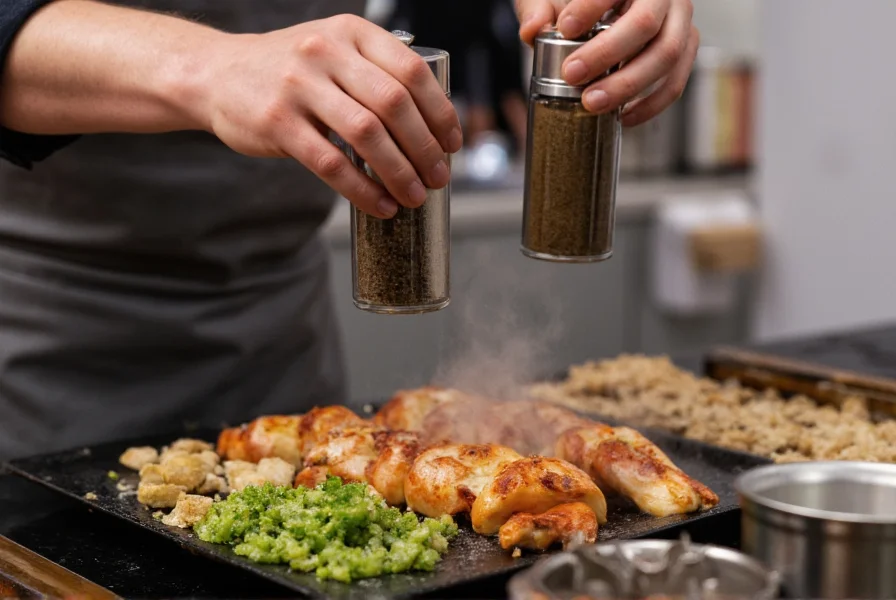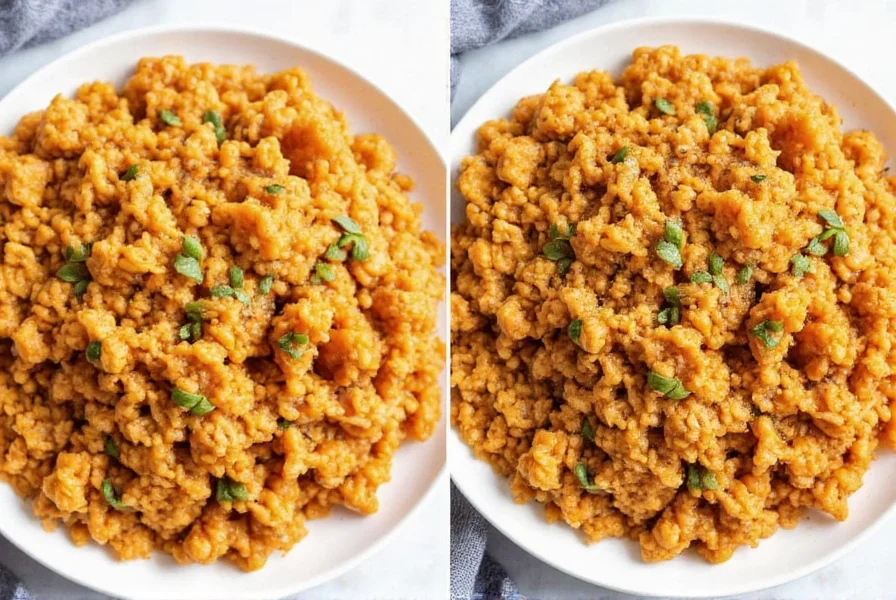Many home cooks encounter confusion with seasoning terminology, particularly regarding the proper way to incorporate salt and pepper into recipes. Understanding correct culinary language ensures better communication in the kitchen and improves cooking results. When recipes mention seasoning, they're referring to the critical process of enhancing flavors through strategic addition of these fundamental ingredients.
Understanding Proper Seasoning Terminology
The confusion around "push it by salt and pepper" typically originates from misinterpretation of standard cooking instructions. Professional chefs and reliable recipes use precise language when directing how to season dishes. The correct phrasing is always "season with salt and pepper" or "add salt and pepper to taste"—never "push it by salt and pepper."
Seasoning isn't merely sprinkling these ingredients at the end of cooking. Proper technique involves adding salt and pepper at multiple stages throughout the cooking process. This layered approach allows flavors to develop fully and creates more complex taste profiles than simply "pushing" seasonings onto finished dishes.

The Science Behind Effective Seasoning
Salt functions as a flavor enhancer that suppresses bitterness while amplifying other tastes. Pepper contributes both heat and aromatic complexity. When added at appropriate times during cooking, these seasonings integrate with ingredients rather than sitting on top.
Consider these key principles of proper seasoning:
- Salt proteins early to improve texture and moisture retention
- Add salt in stages rather than all at once
- Pepper is best added toward the end of cooking to preserve its volatile oils
- Always taste before adding more seasoning
| Cooking Stage | Salt Application | Pepper Application |
|---|---|---|
| Preparation | Salt proteins 30-60 minutes before cooking | None |
| During Cooking | Season in layers as dish develops | Minimal amounts if needed |
| Finishing | Adjust final salt balance | Add freshly ground pepper |
Evolution of Seasoning Practices: Historical Context
Seasoning techniques have evolved significantly from preservation-focused methods to modern flavor science. Historical records show salt was primarily used for food preservation until the 16th century, when European culinary traditions began emphasizing its flavor-enhancing properties. Pepper transitioned from a luxury trade commodity (valued more than gold in medieval Europe) to an accessible kitchen staple following maritime trade expansion. This evolution explains why precise seasoning language like "to taste" emerged only in 20th-century home economics literature, replacing earlier vague instructions like "season well."
According to food historians at the Science History Institute, the shift from preservation-focused salting to precision seasoning reflects broader culinary advancements in understanding flavor chemistry. Early cookbooks rarely specified quantities, but modern techniques developed alongside scientific discoveries about how salt alters protein structures and how pepper's volatile compounds degrade with heat exposure.
Source: Science History Institute, "Seasoning the Past: The History of Salt"
Contextual Boundaries in Seasoning Applications
While layered seasoning is fundamental, universal application of "salt and pepper to taste" requires critical adjustments in specific scenarios. Recognizing these boundaries prevents culinary errors and health risks:
- Medical Dietary Restrictions: Individuals with hypertension must adhere to strict sodium limits (1,500-2,300 mg daily per American Heart Association guidelines). Standard seasoning techniques become inappropriate here, requiring substitution with citrus acids, herb blends, and salt-free pepper alternatives to maintain flavor without health compromise.
- Cooking Method Variations: Purdue University Extension research confirms that "foods cooked in water require more seasoning than dry-method preparations due to flavor compound leaching." Vacuum-sealed techniques like sous-vide concentrate flavors, necessitating 25-30% less salt than traditional methods, while deep-frying demands pre-salting to counteract oil absorption.
- Cultural Authenticity Requirements: Japanese cuisine relies on dashi broth for umami instead of direct salting, while Indian cooking uses amchur for tanginess. Applying Western seasoning rules to these traditions creates inauthentic results, as documented in culinary anthropology studies.
Sources: American Heart Association, Purdue University Extension
Common Seasoning Mistakes to Avoid
Understanding why "push it by salt and pepper" represents incorrect technique reveals several common kitchen errors. Many home cooks make the mistake of only seasoning at the end of cooking, which creates surface-level flavor rather than integrated seasoning throughout the dish.
Other frequent errors include:
- Using pre-ground pepper instead of freshly cracked
- Not adjusting for different salt types (Kosher vs. table salt)
- Seasoning without tasting first
- Adding all seasoning at once rather than in stages
Professional Techniques for Perfect Seasoning
Mastering proper seasoning transforms good dishes into exceptional ones. Rather than attempting to "push it by salt and pepper" at the end, professional chefs build flavor systematically. Start by seasoning ingredients as you prepare them, continue seasoning during cooking, and make final adjustments before serving.
When following recipes that instruct to "season with salt and pepper to taste," remember this means:
- Add a small amount of seasoning
- Mix thoroughly
- Taste the dish
- Repeat until balanced flavor is achieved

Developing Your Seasoning Instinct
Becoming proficient at seasoning requires practice and attention. The phrase "season to taste" assumes developing your palate through experience. Start by measuring your salt and pepper additions, then gradually learn to estimate appropriate amounts based on dish size and ingredients.
Remember that different cuisines have distinct seasoning approaches. Mediterranean cooking often features generous salt early in preparation, while Asian cuisines may incorporate salt through soy sauce or fish sauce rather than directly. Understanding these nuances helps avoid the common mistake of trying to simply "push it by salt and pepper" without considering culinary context.











 浙公网安备
33010002000092号
浙公网安备
33010002000092号 浙B2-20120091-4
浙B2-20120091-4